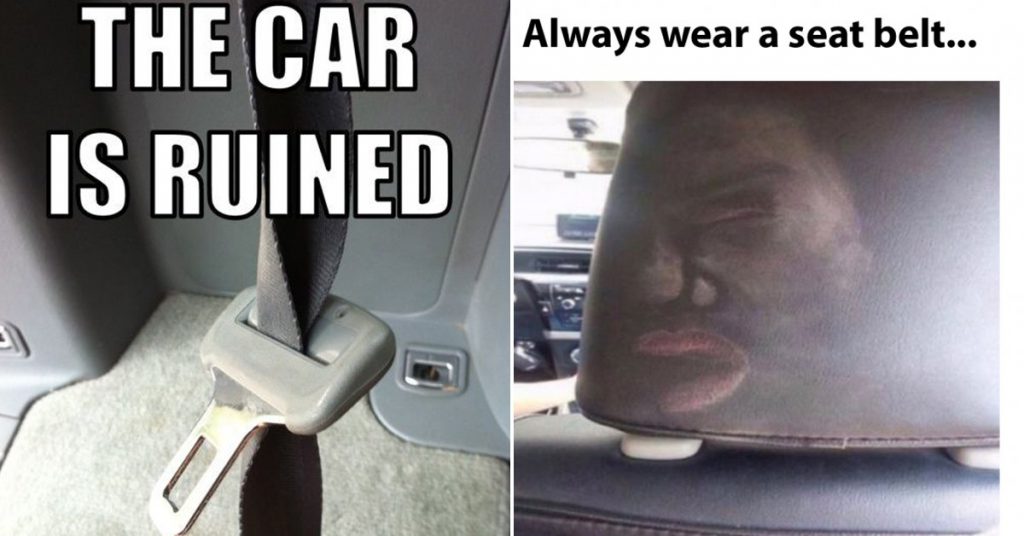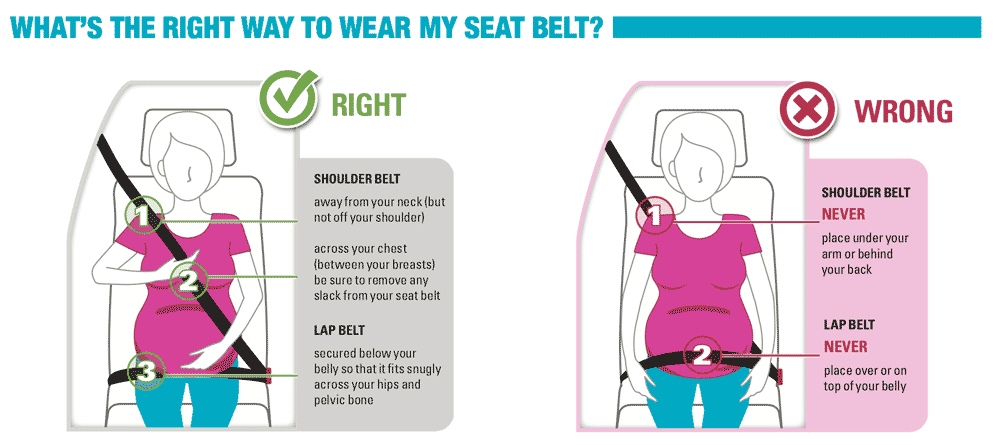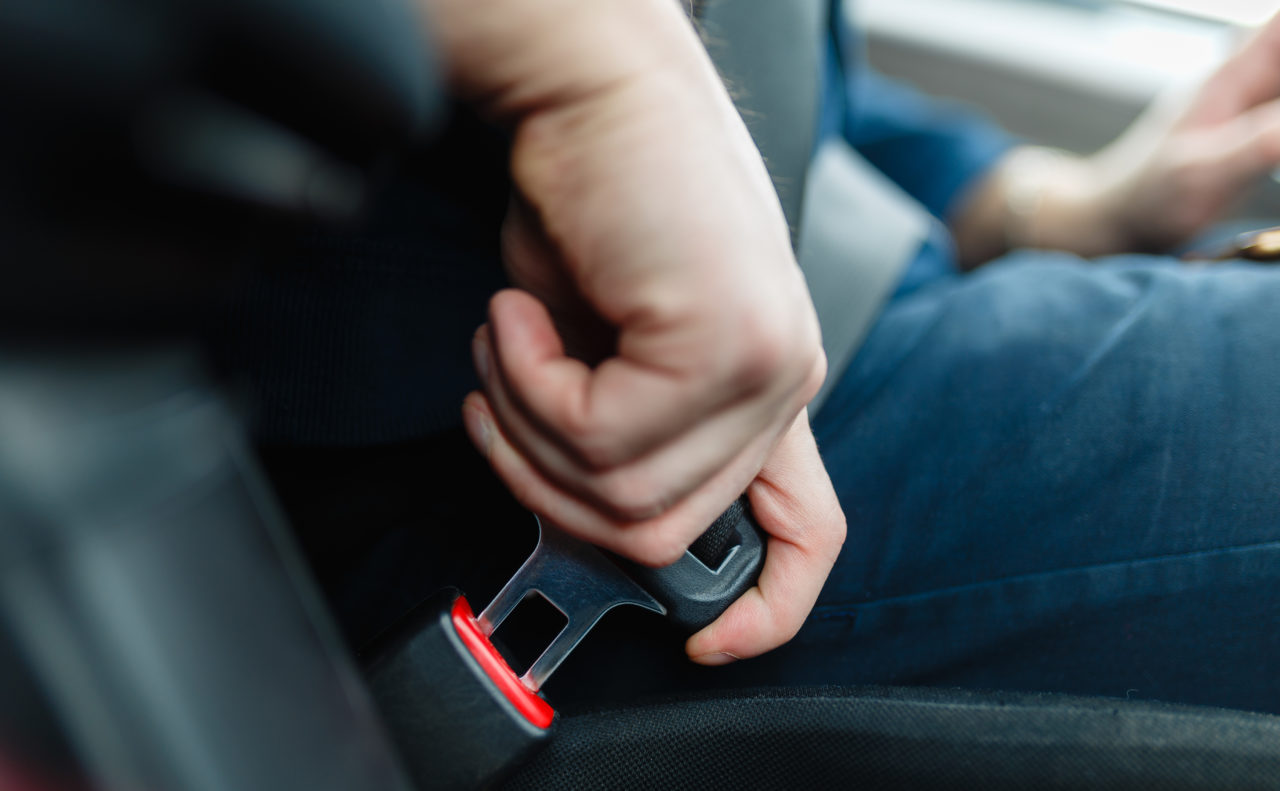The answer is yes, yes they are, seat belts really make you much safer in case an accident occurs. This is an already proven fact. However, some people are still convinced that they don’t need seat belts for their safety or consider them harmful. In this article, I will explain how safe seat belts are and answer some myths people have.
Contents
- What happens when an accident happens?
- Arguments around seat belts
- “In case of collision seat belts will cause injuries to the wearer.”
- “Seat belts limiting movements, make it hard to drive and are uncomfortable”
- “Seat belts obstruct people from getting out of vehicles that are burning or sinking”
- “It is better to go with the force than to be belted-in”
- “Driver can grab on the steering wheel, or using airbag alone is enough”
- “Pregnant women can not wear them, they are not good for babies”
- The Down Side Of Seat Belts
- Conclusion
What happens when an accident happens?
Before we getting to how seat belts can save your life, you must understand what happens to the passenger(s) in a car upon an accident.
When a car moves, you, the driver or passenger, move in the same speed and direction as that car. For example, the car is traveling at 30mph (about 48km/h), your body also travels at 30mph. If an accident happens at this time, your car will stop suddenly, but your body will still moving forward. Whether you are ejected out of the car or got thrown around inside is depending on the direction of the impact.
After reading all this, you probably understand what the role of seat belts is: to keep you in a place securely. Of course, that does not mean you will be completely safe because there are many factors involved in an accident. But at least, you will have a much higher chance of surviving and not suffering serious damage
According to NHTSA’s statistics about seat belts, 47% of passenger vehicle occupants killed in 2009 were unrestrained. Wearing seat belts can save thousands of people in a year. This is why countries in the world make great efforts to enforce seat belt policy. They are the most simple and effective devices to keep you alive and healthy.

Arguments around seat belts
Even though the benefits of seat belts are obvious, people still argue against them and oppose the law that requires seat belts wearing. Here are some of those arguments they use frequently.
“In case of collision seat belts will cause injuries to the wearer.”
Yes, this is true, if the impact is too great seat belts can cause some surface injuries, internal damages, even fractures. But if you do not wear seat belts, you still have these injuries and something much worse. Those injuries are nothing compare to your health and life.
“Seat belts limiting movements, make it hard to drive and are uncomfortable”
Nowadays, seat belts are designed to be more comfortable and convenient to wear. They will pull and retract upon movements of the driver, only lock up when they detect a sudden change in speed or direction. People who have worn seat belts for a long time tell that once they get used to them, they will not even notice they are wearing seat belts.
“Seat belts obstruct people from getting out of vehicles that are burning or sinking”
The seat belt system is made to be easily released with one click, so the chance a seat belt ties you in one place in case of emergency is not that high. Were you not wear a seat belt and your car burned or sank, chances are you would: 1. Already passed out 2. Have injuries so serious that you would not even be able to untie your seat belt if you did wear it. Besides, the chance that happens to your vehicle is really small anyway.
“It is better to go with the force than to be belted-in”
“Go with the force” here means you may be ejected out of your car. You will fall hard, or slide or roll on the road, causing serious injuries. In worse cases, you will be hit by your own vehicle, or get run over by others if they do not react fast enough. If you are not ejected outside, you may still be slam into the steering wheel and have internal injuries and fractures, or get thrown around and completely lose control of both your vehicle and the situation.
In some places, it is not compulsory for people in back seats to be buckled up, but you should wear seat belts no matter where you sit. When an accident happens people who do not wear seat belts will bump into people who do.
“Driver can grab on the steering wheel, or using airbag alone is enough”
No, please do not only use the steering wheel to stop yourself, the force may be too big and can break your arms and other damages.
Airbags are designed to work with seat belts. Without seat belts, the force from the airbags springing out can seriously injure or even kill you. There is no guarantee that you will hit exactly on the airbag, you may slide under or to the side of it instead
“Pregnant women can not wear them, they are not good for babies”
It is the opposite actually, doctors recommend pregnant women to wear seat belts when inside a car. You can put the lap belt under your belly and shoulder strap between your breasts and through the side of your belly. That way, the seat belts will not affect the baby. If you worry about the airbag, do not turn it off, tilt your seat back instead, move it away from your dashboard as much as you can.

SEE MORE:
The Down Side Of Seat Belts
Emeritus Professor John Adams of University College London has made a research about “risk compensation”, and wearing seat belts is one of the aspects he considered. He looked into the statistics of 18 countries and saw that even though they made wearing seat belts compulsory for passenger vehicle occupants, the number of road accidents still increase. He explained that is because people “overcompensate” the risks while driving with seat belts.
Simply explain, when you know that you have seat belts to ensure your safety, you might, consciously or unconsciously, think that you can take more risks than usual – drive faster, more reckless, under influences,… It is our minds that weigh risks and rewards to decide our actions. If the rewards are high and risks are low enough, we may take on more risks to get more rewards, result in more reckless actions and, maybe, less than ideal outcomes. In this case, it leads to more accidents occur than before.
This indicates that the factors that ensure your safety come not only from the surrounding circumstances but also from within you, from your emotion and sense of responsibility when participating in traffic. If you are irresponsible to yourself, no safety device can save you.
Conclusion
Wearing seat belts is an important practice that everyone should get used to. It can protect you and your life’s quality and shows that you are a responsible road user. You can visit our Driving Tips for interesting and useful safety facts.



